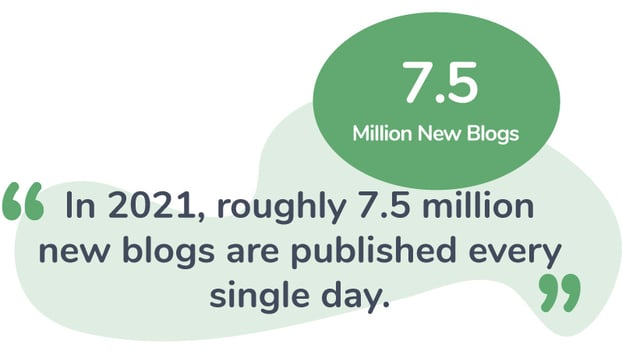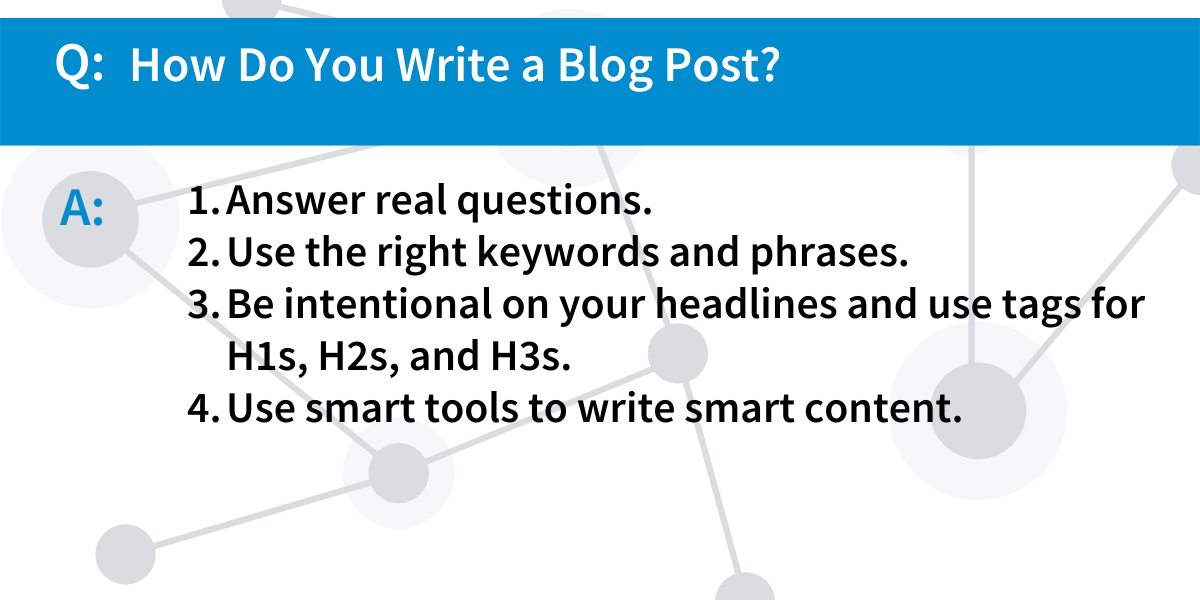How to Write for SEO in 2021
May 19, 2021 •DJ Team

Digital content marketing isn’t a new practice, but the way content pros plan, develop, and publish content online is constantly changing. This is largely due to a never-ending race to make better connections to consumers and, ultimately, secure a place on the first page of a search result. Thankfully, that race is making it possible for brands to build incredible SEO strategies that truly help them make better, lasting connections with potential consumers online.
SEO writing takes patience, intention, and thorough planning to execute effective content that works to boost a brand and its placement within search results.
What is SEO writing and how do I do it?
SEO is an acronym for Search Engine Optimization, and it refers to the process of connecting content to user searches on major search engines, like Google. In practice, SEO writing (also called ‘writing for SEO’) means creating content that is relevant to consumer needs by incorporating keywords and phrases into the content.
According to Google, after a page is discovered, the search engine tries to understand what the page is about through a process called indexing. While indexing, Google analyzes page content, images, and video files. It’s looking for page titles, clear page headings that convey the general subject of the page, and keywords to connect a page to a search result.
How do you write a blog post in 2021?
In 2021, roughly 7.5 million new blogs are published every single day. It’s no wonder getting to that first results page can be such a challenge. Coupled with the exhausting feeling of not having anything new or important to say but knowing that content needs to be regularly published to keep SEO traction, it’s easy for content creators to feel lost! That’s a cocktail for distress.

So how do you write a blog post in 2021? Here are some straightforward tips to give your content the best opportunity to place well on search engines:
- Answer real questions - the questions your audience are searching
- Use the right keywords and phrases
- Be intentional on your headlines and use tags for H1s, H2s, and H3s
- Use smart tools to write smart content
1. Answer real questions
The most effective way to make your content work better is to focus on what users are searching. When you can talk directly to specific questions, challenges, or keywords that searchers are actively using in their searches, Google will be able to better connect you with your audience.
2. Use the right keywords and phrases
When answering specific questions and speaking to specific keywords, those keywords and questions need to appear within your content.
Wondering how to place keywords in an article? This is where the art of the craft comes in: write around those keywords so that you can create more organic content.
What are good keywords? If the answer was simple, we wouldn’t be here! Keyword competition is always changing and with that change comes uncertainty about what competition might be present for certain keywords and phrases in the future. If a competing brand is also working on a blog that answers the same question, both brands might be going up against each other to rise up the results page chain. To choose the right keywords, content marketing pros use keyword research tools to understand what keywords to use for their content.
3. Be intentional on your headlines and use tags for H1s, H2s, and H3s
The same way you might scan through a blog’s outline before diving in, search engines also look to page titles and section headers to make immediate decisions on subject matter. When SEO writing, it’s a critical practice to ensure that your content is sticking to H1s for titles, H2s for main content section headers, and H3s for sub-headers under the H2s. When these aren’t properly used, search engines may not make accurate connections to searches, and might think your content is disorganized.
4. Use smart tools to write smart content
We’re not trying to sound smart here, but using smart technologies that connect your business’ consumer engagement data with viable, data-driven opportunities to boost your brand on search engine result pages. Some SEO content writing tools can help creators gather content ideas and talking points, but AI-powered technology can now give marketing professionals a comprehensive, accurate view of their content performance in real-time. This means identifying content gaps and opportunities as soon as you’re ready to build and publish content. No more second-guessing. No trial-and-error. It’s simple.

DemandJump’s AI-powered content insights solution gives users the benefit of shared industry data, pinpointing exactly what your customers are asking, and what keywords will best support content aimed at answering those questions.
The best part? We can help you form an SEO content writing template to get you started—just click on any search term that appears in one of our reports to generate a ready-to-write SEO blog outline. After all, building a content’s structure is the hardest part. Try it for free today!
Categories
- Attribution Tracking (13)
- Channel Optimization (11)
- Consumer Insights (68)
- Content Marketing (251)
- Data Science (8)
- Digital Marketing (6)
- Digital Transformation (26)
- Enterprise (10)
- Lead Generation (14)
- Market Intelligence (8)
- Marketing Analytics (39)
- Marketing Attribution (57)
- Marketing Management (153)
- Marketing Operations (86)
- Organic Search (222)
- Paid Search (52)
- Pillar-Based Marketing (63)
- Programmatic Advertising (9)
- SaaS Content (14)
- SaaS Marketing (29)
- Search Marketing (111)
- SEO Keyword Research (28)
- SEO Pillar (18)
- SEO Strategy (46)
- SMB (5)
- Website Content (12)
